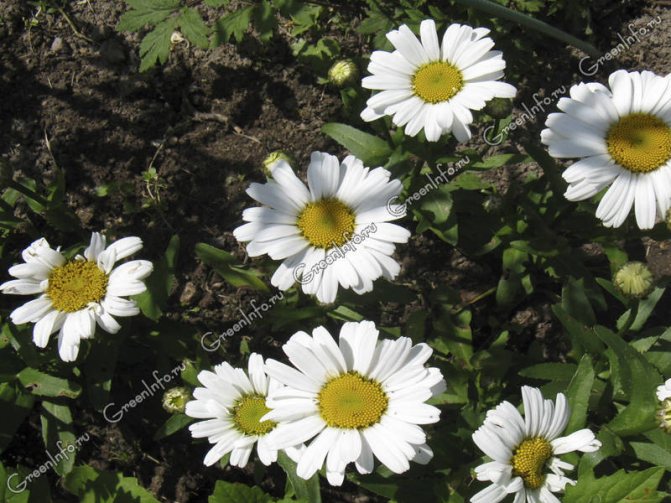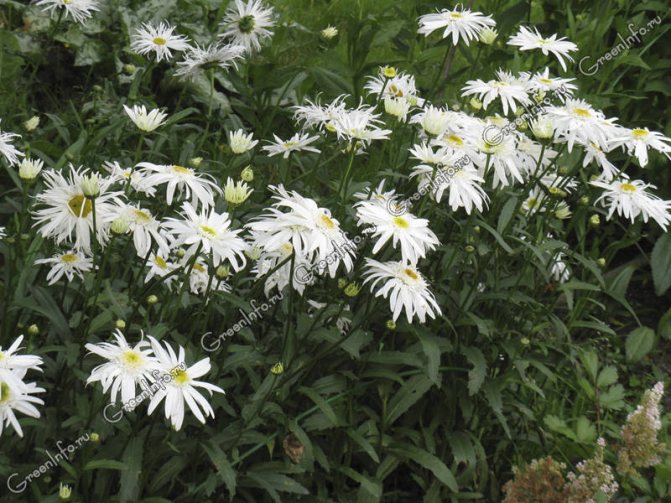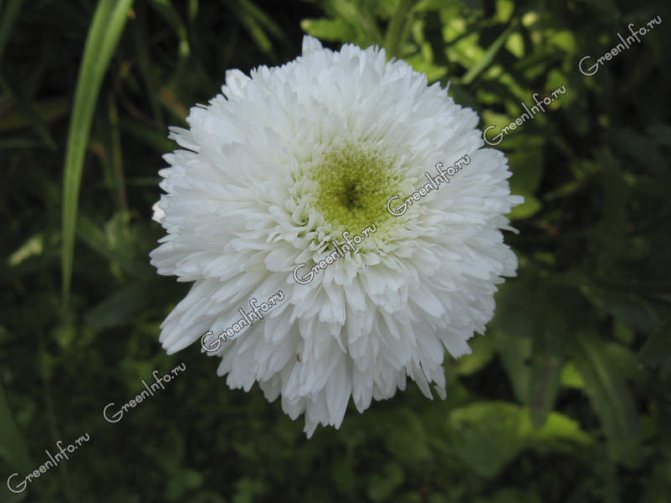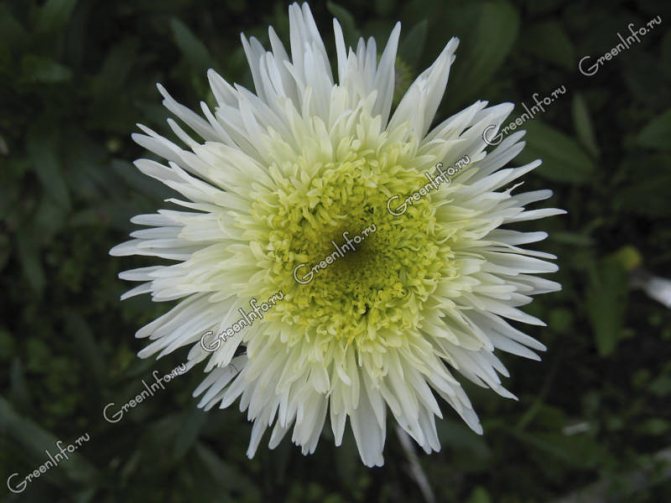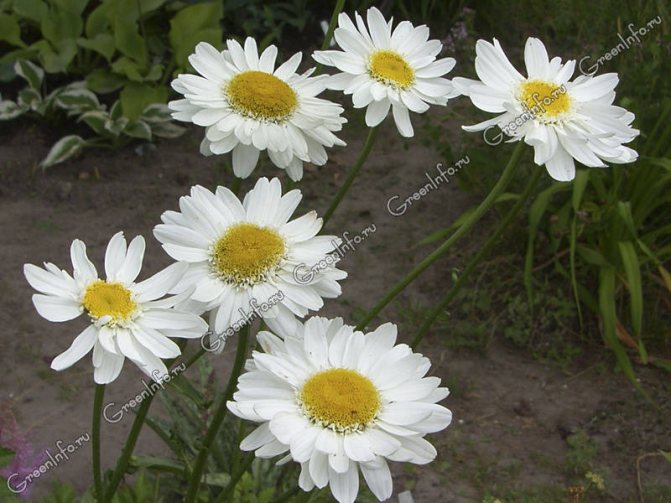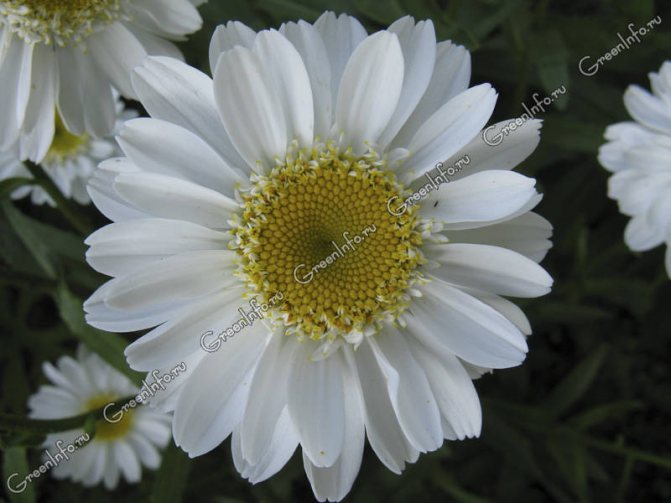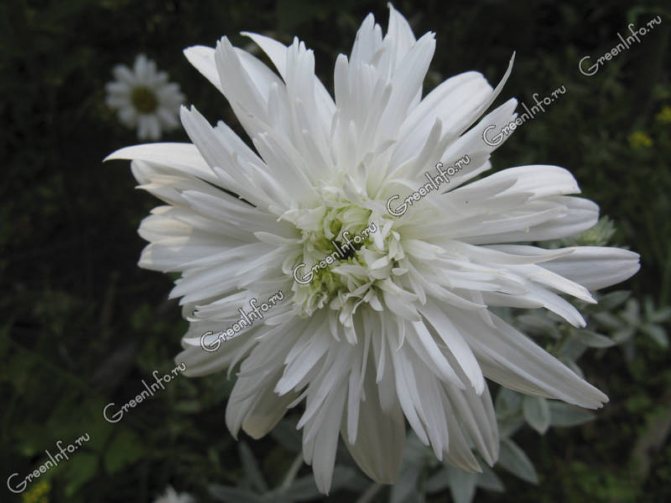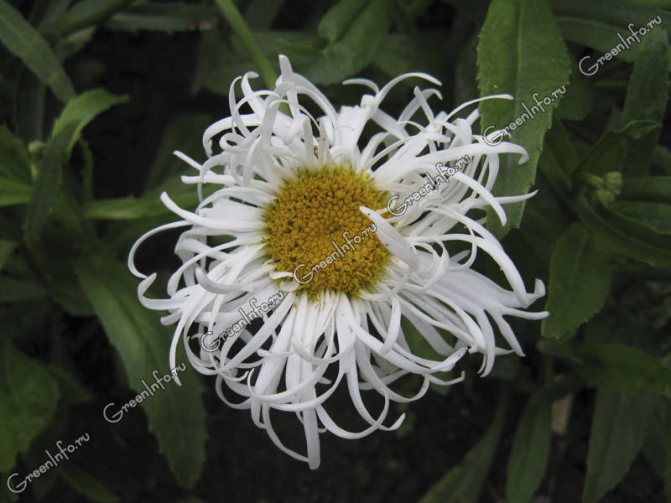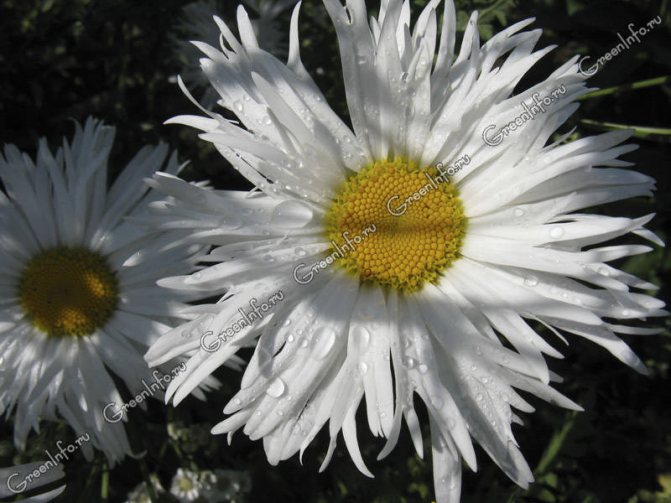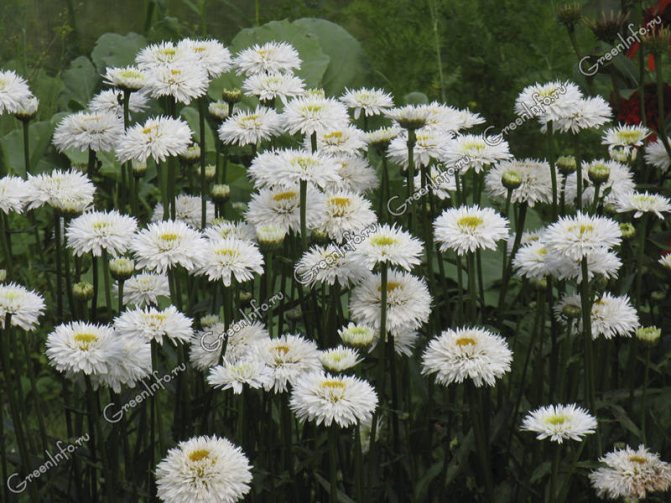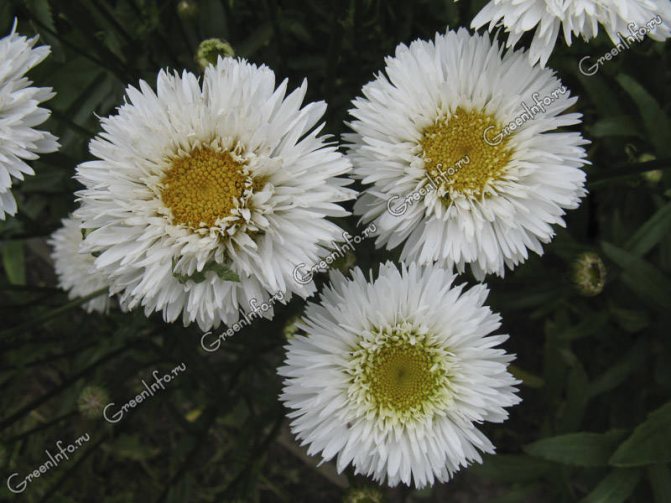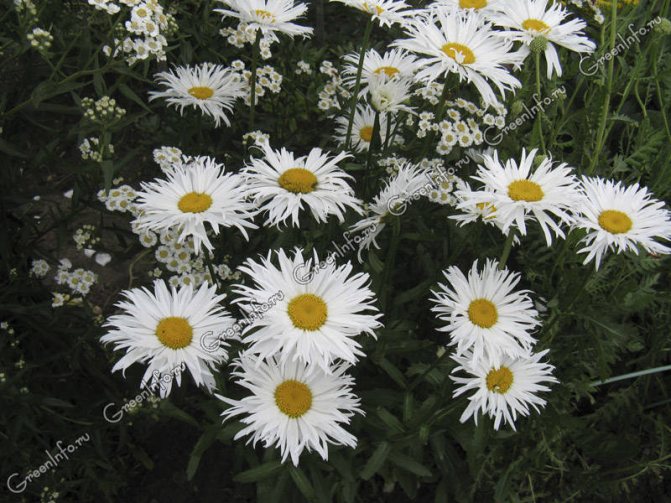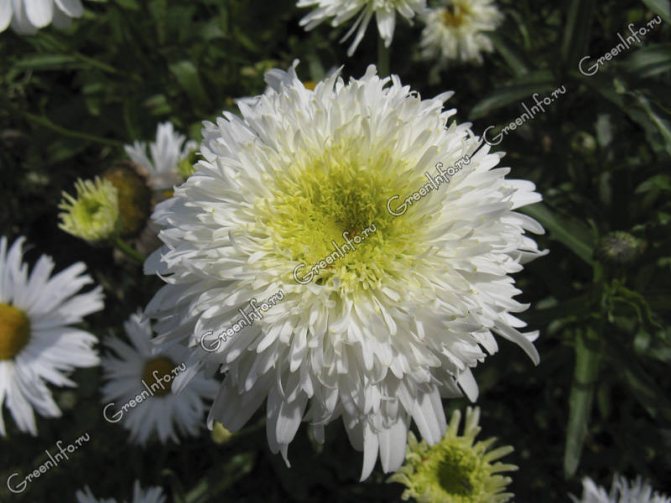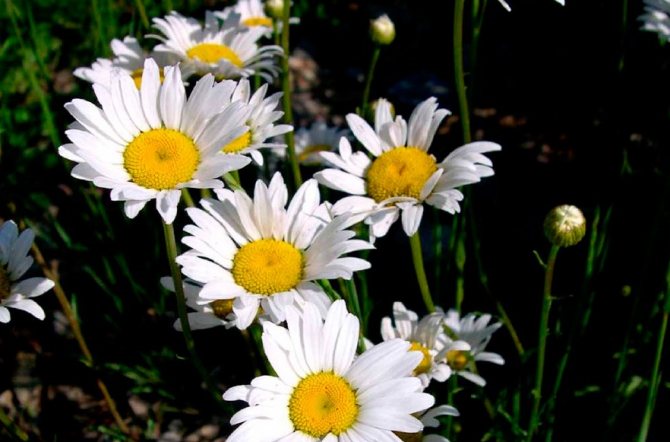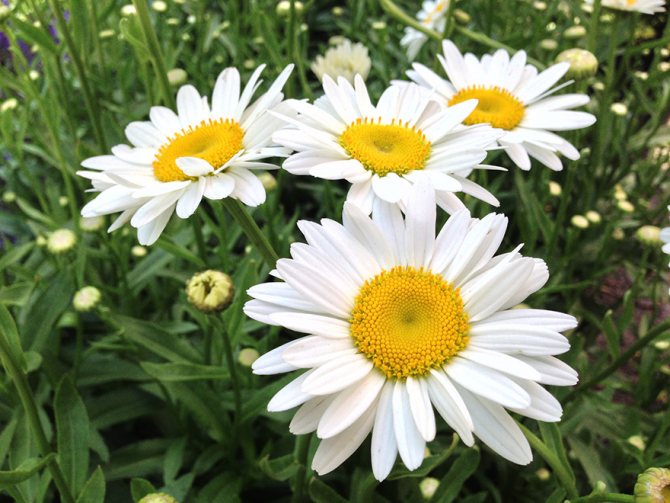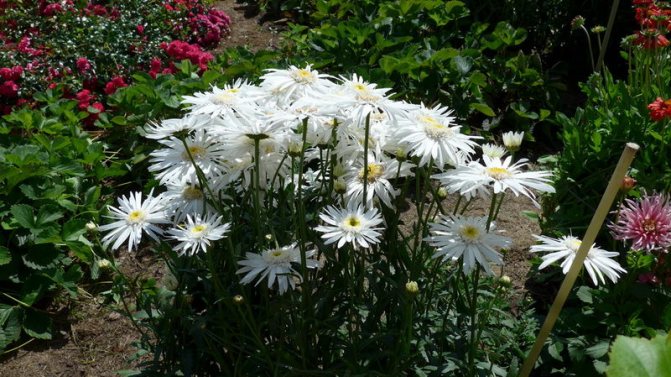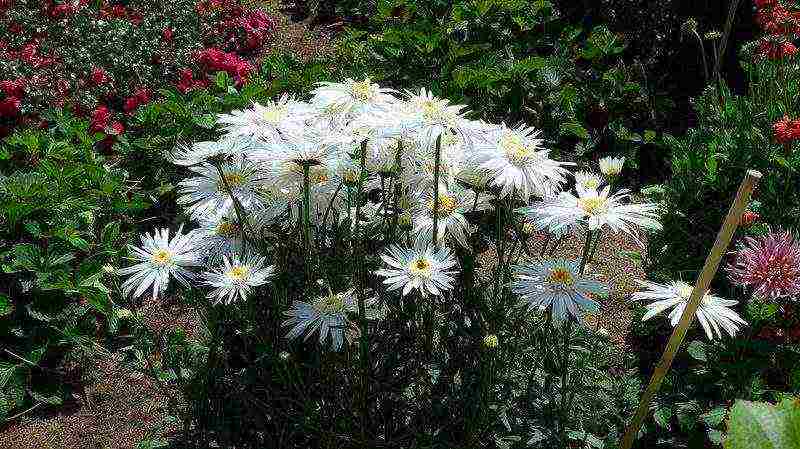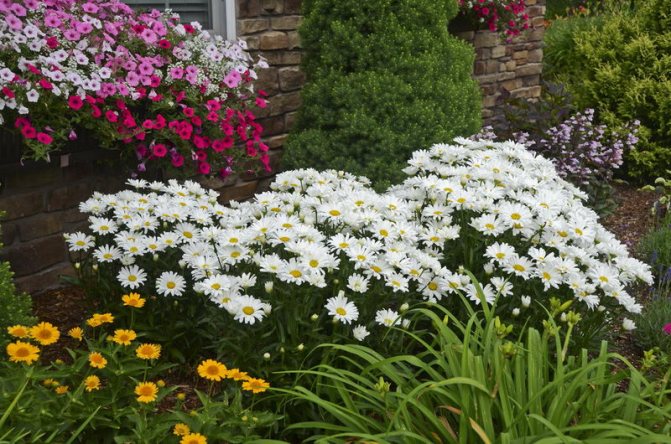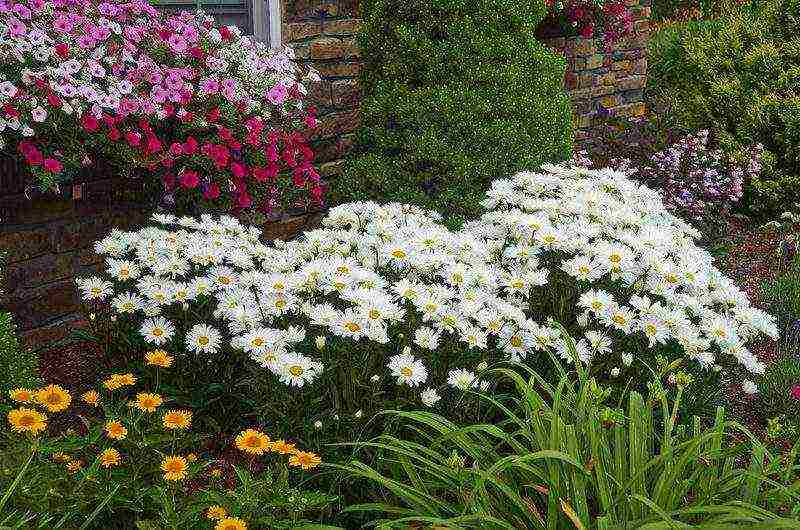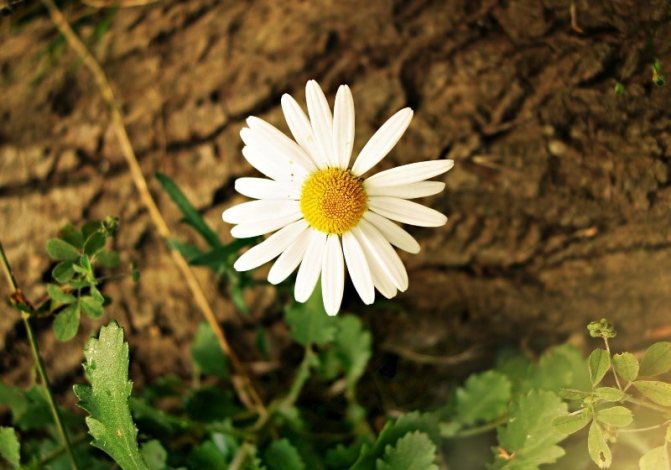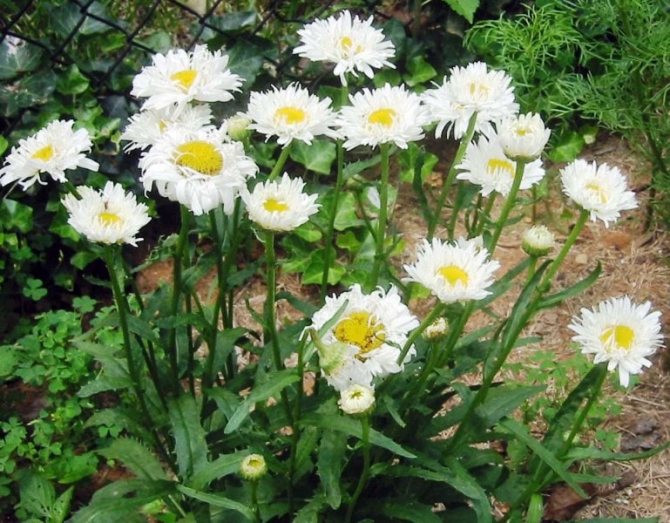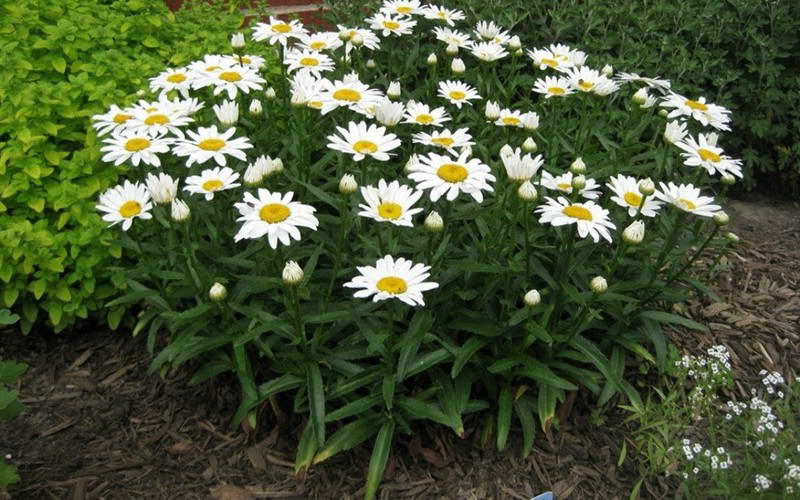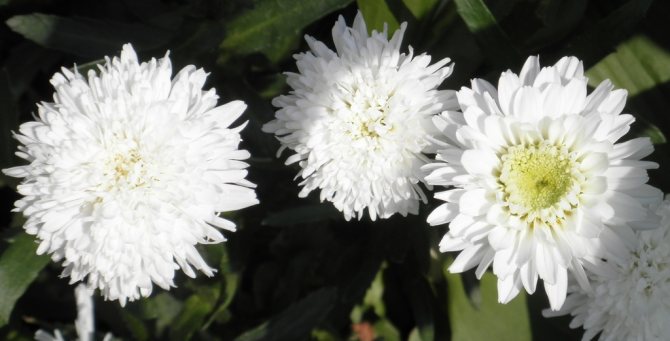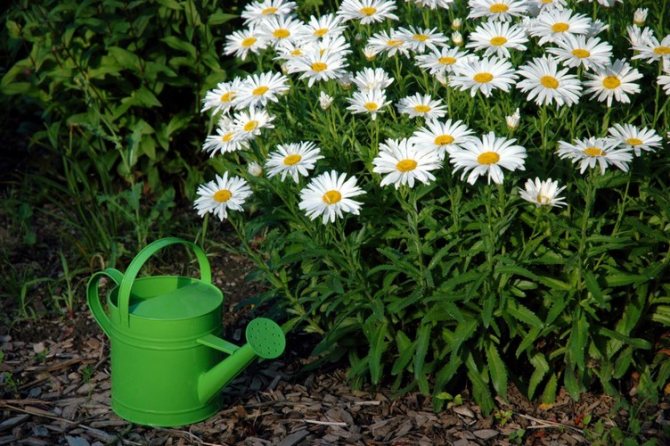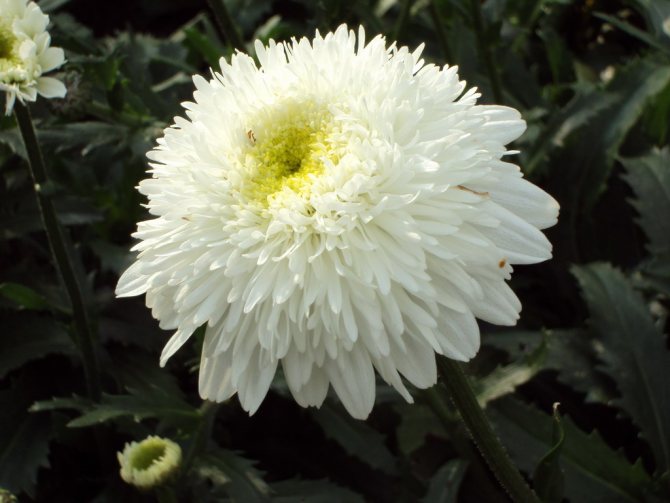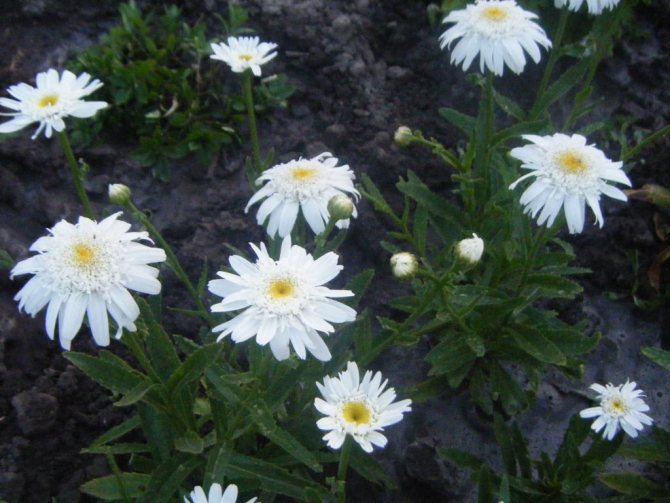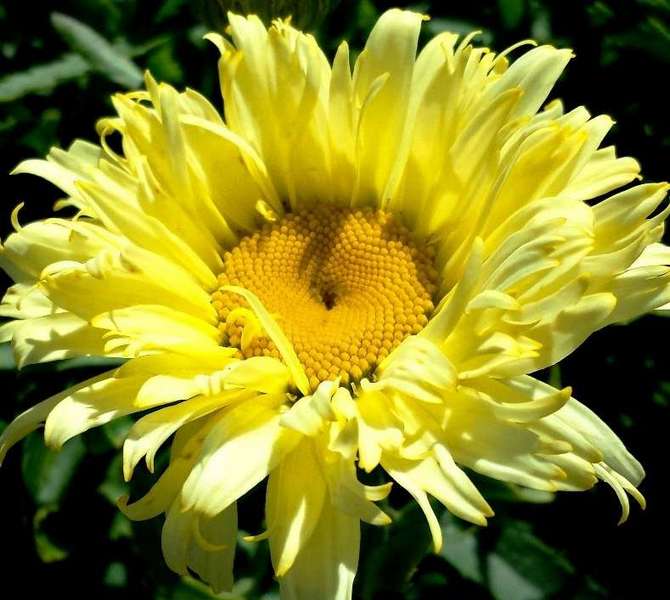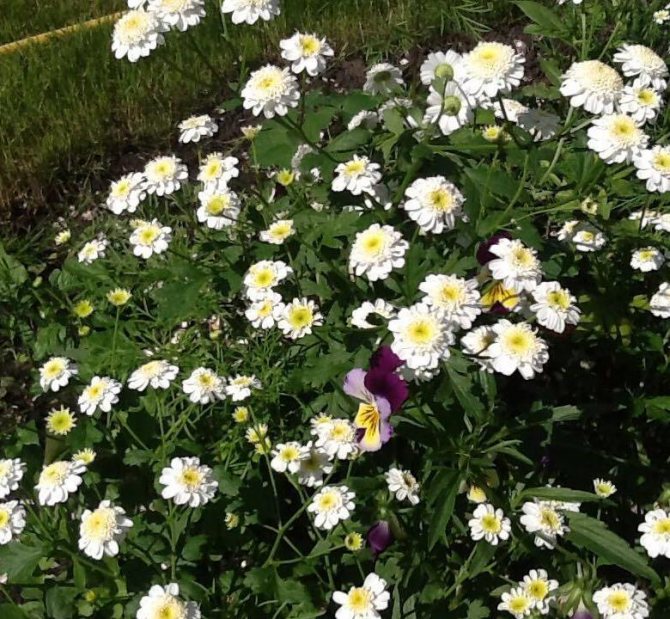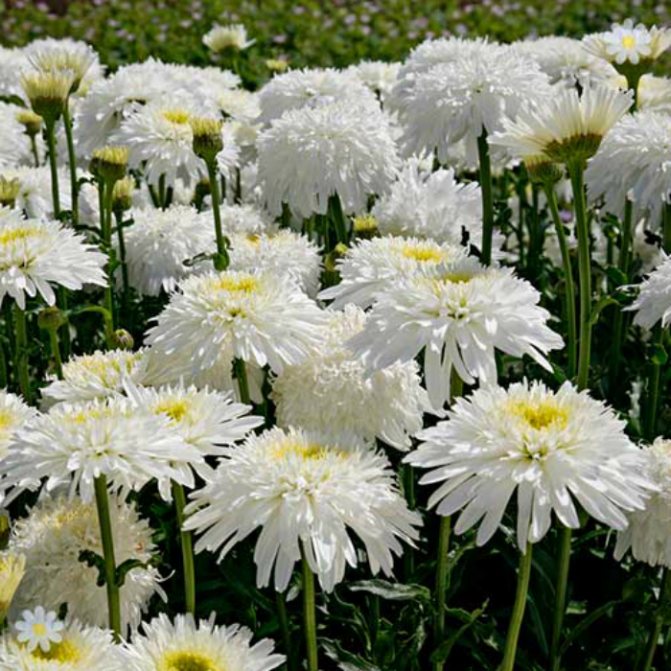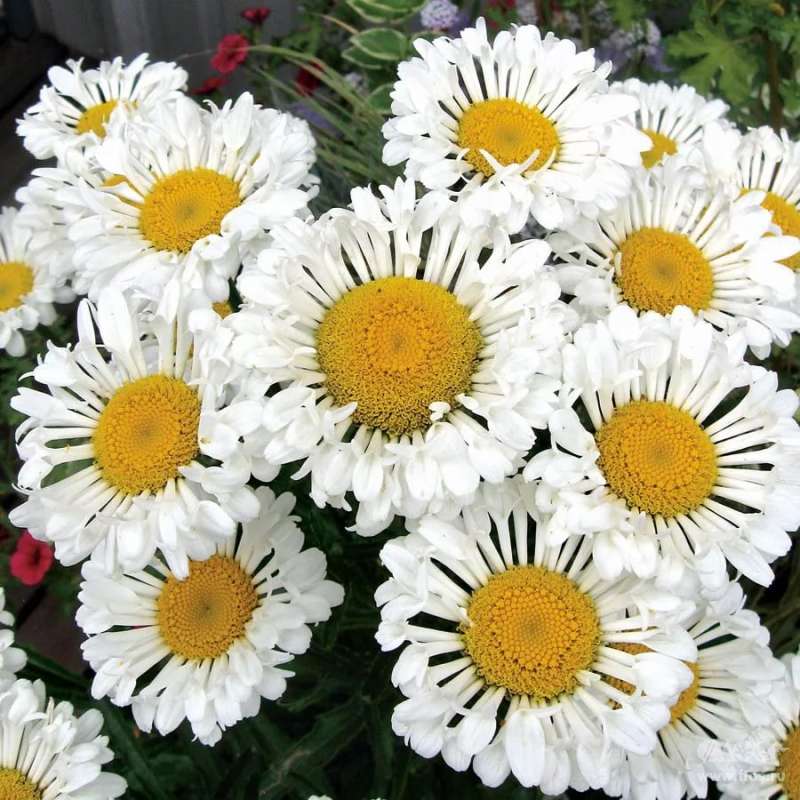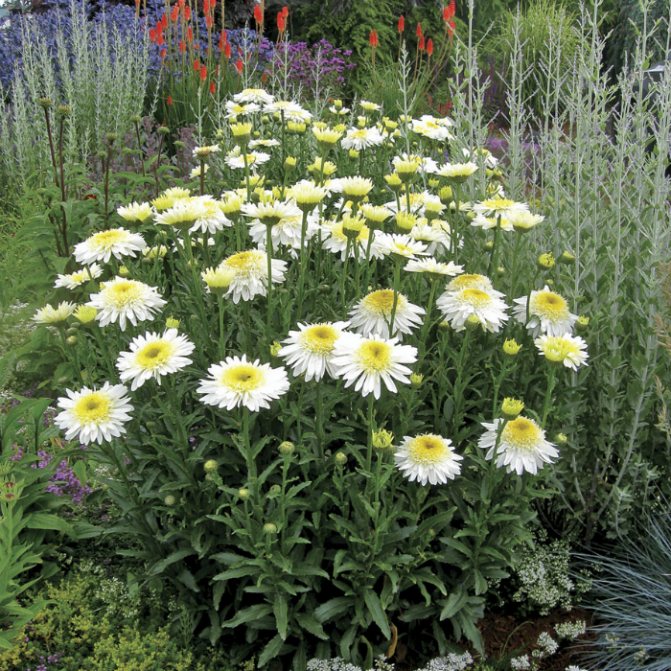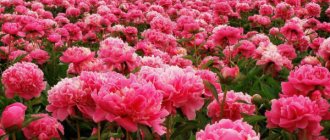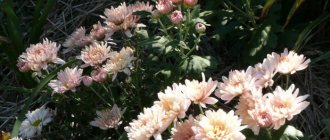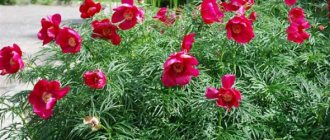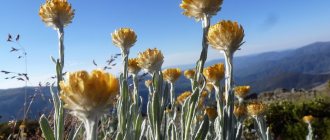It would seem that such interesting things can be found in daisies, there are only two not very bright colors - white and yellow. But modern breeders, like good magicians, know how to create real miracles out of nothing. Daisies can be double, semi-double and simple, high and low, their petals are narrow, wide, with elongated or rounded edges. And as a result, there are many interesting varieties of plants, which are more correctly called the nivyanik. The cornflower grows well in open sunny places, loves fertile soils. The daisy grows quickly, so it must be divided frequently. Spring and early autumn are the best times for division. After three years, the bushes grow so much that it is already difficult to cope with them. If the bushes are not divided, putting them off for later, at some point the plant can simply be lost.
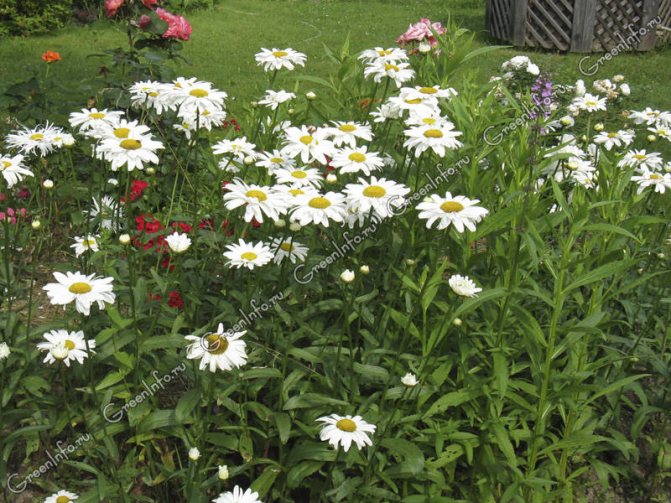
Nivyaniki
Simple garden chamomile - common daisy, daisy, or meadow chamomile (Leucanthemum vulgare) - blooms from early June for almost two months. Plant height - 60-70 cm, flowers are collected in a flower basket (yellow - tubular in the middle, reed - white at the edges), 6-7 cm in diameter. This cute weed lives its own life in the garden. Common cornflower and its varieties are distinguished by their durability. In varietal nivyaniks, the size of the flower basket is much larger than that of the species. They do not weed, unlike their ancestors. The most famous varieties Maxima Koenig (Maxima Kenig) and May Queen (May Queen). The King, as he should be, is tall, handsome and stately (90/12), and the Queen is graceful, bright, short (50/12), with shiny dark green leaves.
Due to its decorativeness, the greatest (Leucanthemum maximum) is gaining more and more popularity among flower growers, although it is less durable and stable than the common cornflower. The winter hardiness of the daisy is the highest, but it only lives for three years, and it must be divided in two years. A plant with a rosette of leaves overwinters. This daisy and its varieties are characterized by a later and longer flowering, from July to autumn. The continuity of flowering is ensured by the appearance of more and more new shoots throughout the season. Such growing conditions practically turn a perennial into a minor. Therefore, if you have purchased the largest varieties of cornflower, try to divide them more often.
A separate species is considered Nivyanik is magnificent (Leucanthemum x superbum), obtained by the American gardener Luther Burbank in 1890. This is a complex hybrid of the common daisy and the largest, then crossed with two more species of "chamomiles", although often its varieties are referred to as the largest daisy.
The assortment includes simple and terry varieties. The most famous of them are - Alaska (Alaska), Beethoven (Bethoven), Polaris (Polaris), Little Princesses (Little Princess). Alaska has proven to be one of the more resistant varieties. Low daisies like Little Princesses Snow Lady (Snow Lady) 25-30 cm high suitable for planting in the foreground or for alpine slides. Snow Lady is an interesting chamomile with large flowers and wide petals, but it fell out pretty quickly. Varieties with terry baskets - Aglaya (Aglay), Exibition (Exhibition), Viral Suprim (Wirral Supreme), Christine Hagemann (Christine Hagemann) are good both in the garden and in the cut.
|
|
Modern varieties are devoid of the shortcomings of their predecessors. My favorite chamomile Brideal Weil (Bridal Vail) is good as a bridal veil and can compete with the best varieties of chrysanthemums. A white terry pompom proudly holds its head on a sturdy stem. Chamomile pleases with its long and abundant flowering.This chamomile, as a true queen, stands out among its subjects: and its leaves are not like everyone else's, but more shiny, dark green, and the frost resistance is excellent, and it grows splendidly. Another terry variety - Fiona Coghill (Fiona Coghill), its creamy white petals form a tall pompom with a yellow-green center that looks like a shepherd's hat.
|
|
Of the daisies with ordinary petals, the most perfect are Sunny Side Up (Sunny Side Up). A double layer of white petals surrounds a large yellow center. The tips of the petals are notched, around the center there are some small white curls. It would seem nothing special, but you need to see this flower in order to appreciate it.
|
|
Among the low varieties there are Aisstern (Eisstern), Broadway Lights (Broadway Lights), Osiris Niji (Osiris Neige), Stein (Stine). The petals of Broadway Lights are pale yellow in color, as they bloom they brighten, the bush has yellow and cream flowers at the same time. Osiris Niji is a semi-double chamomile with many narrow thin petals around a small dark yellow center. Stein is an unusual chamomile, at the beginning of its dissolution its flowers look like a star.
|
|
Old Cat Vareti (Old Court Variety) - light and airy, its thin petals are slightly curled around a large yellow center. Interesting variety Crazy Daisy (Crazy Daizy). The variety fully justifies its name, it blooms and grows, indeed, very quickly, the bushes have to be divided every year. The flowers are large, with snow-white petals. The only variety that repeats its properties when propagated by seeds.
|
|
Growing
For daisies, only sunny places are needed. In partial shade, they develop and bloom much worse. This is especially true for the largest daisy and varieties based on it. Nivyany are picky about soils, they do not like light sandy or heavy clay soils. Before planting, care must be taken that the soil is fertile, sandy loam or loamy. Good drainage is another important prerequisite for the growth and flowering of the saplings. In damp or waterlogged areas, plants often get sick and age faster. On poor soils, as well as with a lack of moisture, the flowers become smaller. The frequency of division of the curtains depends on the original species; the varieties of the sage grass need more frequent division than the varieties of the sage grass hybrid and ordinary.
Chamomile loves watering, but does not tolerate waterlogging. With proper watering, the result is visible immediately, the color of the flowers becomes brighter, and the flowers themselves are larger. Nivyanik loves top dressing, especially with organic fertilizers, two or three top dressing per season is quite enough. To preserve decorativeness and re-flowering, faded shoots are best removed. Repeated flowering is possible under favorable conditions. It is better to mulch terry varieties for the winter, but in early spring, do not forget to remove the shelter as early as possible so that the bushes do not come out.
|
|
Landing in open ground
If you carefully read the description of the species, it becomes clear that it is not at all difficult to grow such a beautiful plant. Any variety you like can be grown in seedlings from seeds.
Hydrangea blue or blue - planting and care in the open field
Further, it will be described in detail when to plant a daisy for seedlings, why growing from seeds involves the regular purchase of planting material, and the seeds of the plant collected with their own hands are likely to disappoint the gardener.
Seeds for planting
When choosing seeds, you should pay attention to the variety and labeling.It is better to give preference to trusted producers - such seed is of better quality.
It should be borne in mind that double and semi-double varieties are problematic to propagate with seeds obtained from their own plantings. So meadow chamomile can multiply, but a varietal daisy cannot be grown in this way.
Plants obtained in this way will either have simple flowers or have partially lost their qualities.
Attention! It is best to acquire new planting material every few years and rejuvenate the planting.
Growing seedlings
Sowing seeds of the daisy is carried out from late February to early March. This plant has a huge advantage - it will be possible to admire the flowering already this season.
Attention! Sowing times can vary depending on the climate. In cold regions, sowing is carried out 2-3 weeks later, as well as planting seedlings in the ground.
The seeding process is simple and typical for all flower crops.
Step by step it looks like this:
- A drainage layer of broken brick or fine gravel is poured onto the bottom of a flat container.
- A nutritious soil is poured on top so that a finger is thick to the edge of the container.
- Watering is carried out with warm water.
- The seeds are spread evenly over the soil surface.
- A small layer of soil is poured on top, about 10 mm thick.
The container need not be covered, the seeds will hatch pretty quickly. Until the emergence of seedlings, the crops are kept at a temperature of 20-21 degrees, and when seedlings appear, it is lowered by 2-3 degrees.
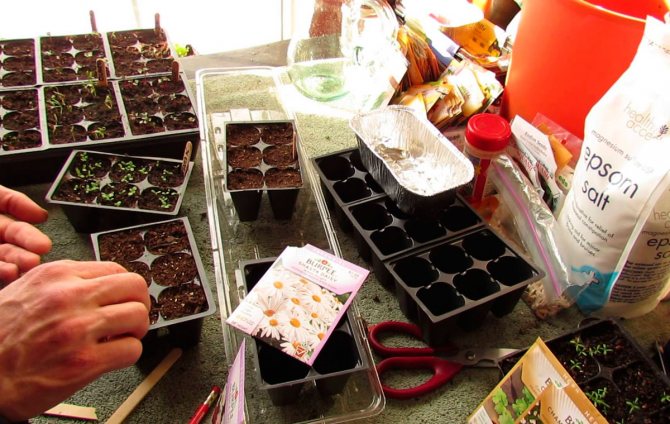

It's easy to grow seedlings
After a month, you can feed with a weak mullein solution. At the age of 40-50 days, young plants should be cut into separate containers and when they take root (after 4-5 days), a second feeding with organic matter or mineral fertilizer should be carried out.
Choosing a landing site
Nivyanik prefers sunny places, sheltered from the wind. The soil for planting needs nutritious, pre-filled with organic fertilizer.
Attention! The preparation of the soil must be taken responsibly, because the nivyanik will grow in this place for more than 4 years.
Avoid places close to groundwater and water accumulation after snowmelt. This plant does not tolerate waterlogged soil. If it is not possible to avoid such places, then when planting, a good drainage layer should be poured onto the bottom of the planting hole.
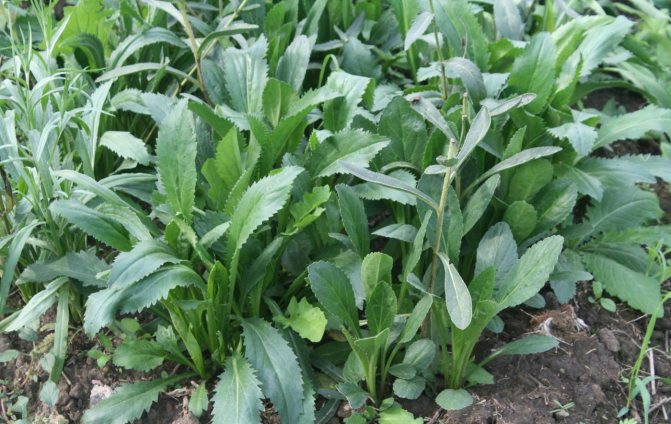

In a sunny place, the bush grows faster
All types of daisies, and especially ordinary ones, are capable of spreading over the site by self-seeding. To avoid thickening of the plantings and the germination of the flower in the wrong places, you should remove the wilted flowers before the seeds begin to ripen.
Landing in the ground
Starting from the end of May, you can start planting a perennial daisy in open ground. 3-4 weeks before planting, the seedlings begin to harden. This implies holding containers with young plants in the open air. The residence time in such conditions is gradually increased.
For planting, prepare holes, water them abundantly and place one seedling in each. After filling the holes, re-watering is carried out. It is better to mulch the plantings right away - this will prevent the rapid evaporation of moisture from the soil.
Reproduction
Nivyaniki are propagated by seeds, dividing bushes and cuttings. Seeds can be sown in spring or late summer. When propagated by seeds, varietal chamomile does not repeat the properties of the original variety, with the exception of the Crazy Daisy variety. It is better to divide the bushes in the spring. The bush is divided into small parts, which are immediately planted in the soil. The division should consist of a stem with a rosette of leaves and rhizomes. Delenki are planted at a distance of 20-30 cm from each other. Young spring divisions take root without problems, in contrast to the autumn division.You just need to remember about moderate watering during rooting.
Small root rosettes with leaves are taken on the cuttings. This operation is best done in the second half of the summer.
In nurseries, daisies are often propagated by microcloning. The tiny plants are usually sold in early summer. They need to be transplanted into pots with nutritious soil and kept in the shade, not forgetting to water. After a month and a half, the plants are planted in the ground, as usual. Micro-cloned plants can be immediately planted in the soil, but be sure to make something like a greenhouse for them. Small "parcels" with good and proper care sometimes even try to bloom in the first summer, but, of course, they do not need to be allowed to do this.
|
|


Page not found
The address is typed incorrectly or there is no such page
Nivyan people have many diseases and enemies. They can suffer from fungal diseases in rainy weather, they are prone to all sorts of spots, rot at the base of the stem. Preventive treatments with Alirin, Gamair, Fitosporin on leaves and soil will not be superfluous for them. For the treatment of diseases, systemic fungicides Topaz, Skor are suitable, which are recommended to be alternated with contact drugs. In case of severe damage, the aerial part of the bush can be cut off, spilled with a fungicide, and covered with a jar. The new growth is usually healthy. To combat pests - thrips, aphids - use the systemic insecticides Confidor, Aktaru and a broad-spectrum contact agent Actellik.
Description of terry chamomile
The herbaceous plant belongs to the Asteraceae (Asteraceae) family. Terry chamomile is popularly called nivyanik. The name is not always correct, since there is a separate variety of terry chamomile - Nivyanik.
Terry chamomile is a decorative perennial with large double inflorescences.
The stem is thick, resilient and dark green, reaching a length of 30 to 100 cm. The buds are large, dense.
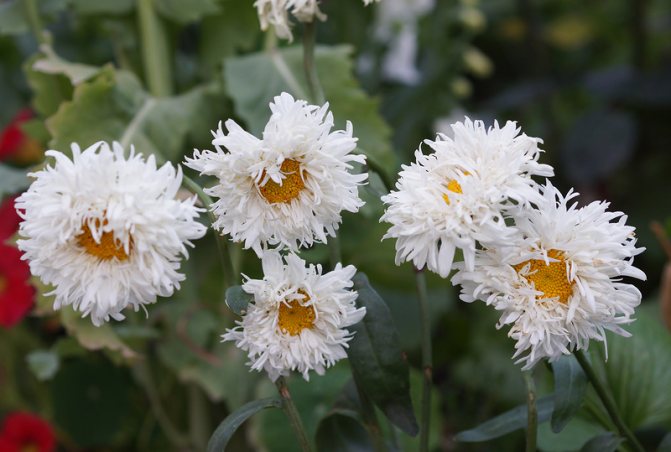

Terry chamomile
Inflorescence time depends on the variety. On average, it starts in June and ends in October. Inflorescence with a diameter of 8-12 cm.
Terry chamomile flowers are similar to chrysanthemums, but are not chrysanthemums. They are soft or firm to the touch. Although there is information in several sources that the daisy belongs to one of the types of chrysanthemums. The information is not officially confirmed in biological encyclopedias.
Interesting! A priori, the flowers of chamomile are terry, snow-white, flowers of rare varieties are cream, milky, chalk shades.
Flowers are suitable for bouquets - they retain freshness for a long time, thin out a pleasant and slightly perceptible aroma, look magnificent and beautiful, especially with a combination of bright accents.
Using
Nivyaniki are used not only to decorate the garden, but also for cutting. Moreover, the cultivation of nivyaniks for cutting has its own specific features. Bushes intended for cutting should have a large feeding area, they need to be divided annually for constant rejuvenation, they need good feeding, especially organic matter, and regular watering. Care should be intensive, then the flowers will be large and on longer peduncles. Chamomiles stand in water for a long time, terry chamomile - up to 10 days with the addition of HB-101. Bouquets of chamomile with a sprig of gypsophila or basil are especially good, i.e. with something gentle and airy.
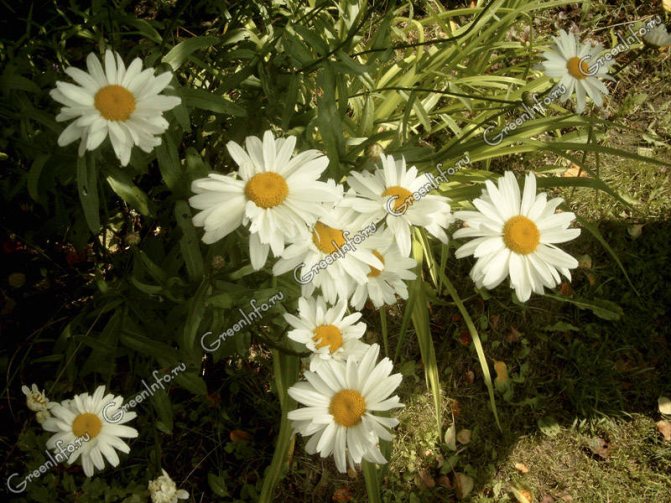

Nivyanik Bogatyr
When using nyvany in design in a mixborder or on flower beds, they must be placed so that they can be easily approached, since they need frequent digging and replanting. They belong to the group of labor-consuming plants. Nivyaniki are good as individual plants in groups on lawns, against a background of green bushes. You can make a separate flower garden from a variety of daisies that bloom at different times.In spring - doronicums, in summer - nivyaniki, pyrethrum, small petals, closer to autumn - geleniums, echinacea, rudbeckia. Nivyaniki, pyrethrum can serve as the basis of a flower garden from meadow plants with the addition of bluebells, yarrow, poppies and cereals.
New varieties of nivyanik
Siberian iris - planting and care in the open field
There are several completely new varieties of cornflower that amaze with the beauty of the inflorescences. They are quite different from the common daisy in the color of the petals and their number. Such flowers are already referred to the groups of the splendid nivyanik and the largest nivyanik, in which varieties with double and semi-double inflorescences have already been collected.
Nivyanik Goldfinch
This species can be attributed to the most decorative and unusual varieties. This terry daisy has a yellow shade of petals, which, as it wilts, changes to cream.
The size of the bush is compact, the height does not exceed 60-70 cm. Chamomile Goldfinch, as the plant is sometimes incorrectly called, has a long flowering - from June to August.
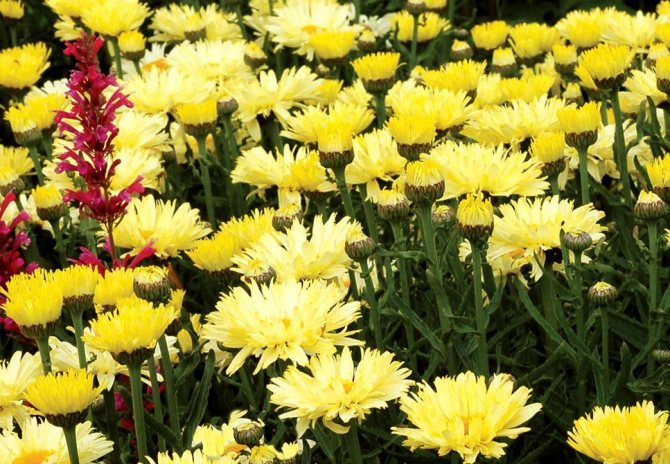

Goldfinch
Nivyanik Kings Crown
The terry flowers of this plant are not at all like ordinary chamomile. The petals are arranged in several rows, and their size decreases from the edge to the middle.
The color of the petals is also very unusual - there is a smooth transition from light yellow small petals in the middle to white along the edge.
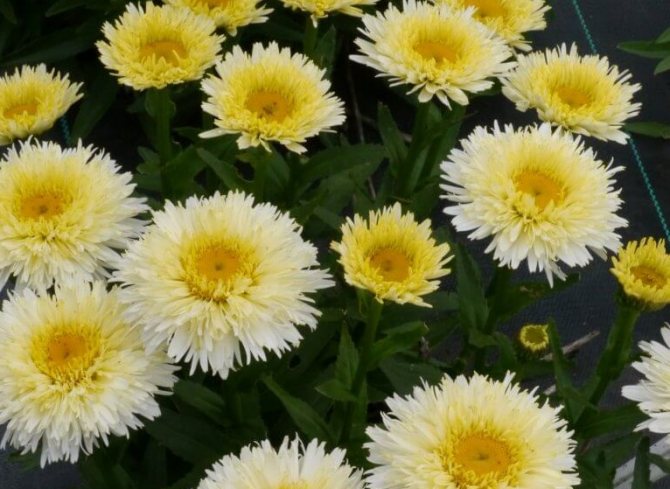

Kings Crown
Nivyanik Aglaya
Refers to the varieties that are united by the name "Nivyanik greatest". The flowers of this plant are double, narrow petals are densely arranged around a small yellow center.
For reference! Aglaya blooms all summer, and in warm climates until October, which no doubt pleases any owner of the site.
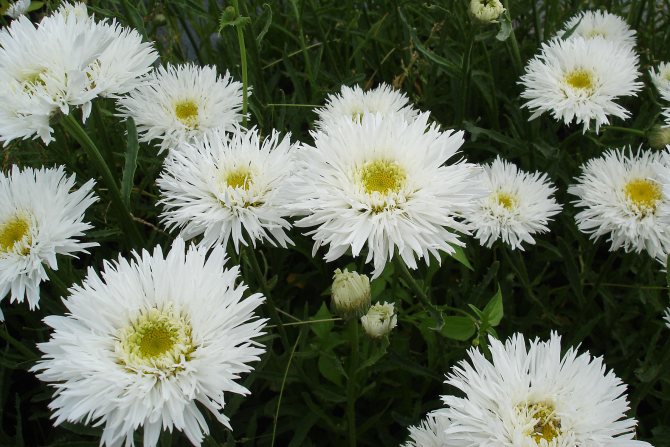

Aglaya
Nivyan care in autumn: preparation for winter
In the fall, the daisy is pruned to a height of 10 cm from the ground level, leaving basal leaves on the stems. If bare roots are found, they are sprinkled with earth.
The daisy is frost-resistant and is able to withstand frosts down to -10 ° C without additional manipulations even in winters with little snow. But this applies only to plants that have already wintered. First-year flowers, especially large-flowered and terry varieties, must be prepared for winter. To protect the plantings from freezing, they are covered with a 10-15 cm layer of leaves, spruce branches or special covering material. In the spring, the shelter is removed to prevent the plants from misting.
Getting your seed
You can use seeds harvested from your plants to grow the lemongrass. It must be understood that the seeds of hybrids do not transmit parental qualities. This rule does not apply to varietal varieties that are characterized by the stability of the transmitted characteristics.
Nivyan seeds have excellent germination and winter hardiness. You can plant them immediately after assembly and wait for flowering the next year. The seeds of the common cornflower are especially tenacious. It self-pollinates so effectively that many treat it like a weed and fight with herbicides.
The strongest and most flowering specimens are chosen in advance and without pruning, they are allowed to bloom to the end. The seed is harvested at the end of August or September. The flower, ready for collecting seeds, has a completely dried stem and a dry capsule, when pressed, it cracks easily.
If you do not plan to plant seeds right away, they are dried for 7-14 days on a napkin (you can whole with baskets) at room temperature. Then they are laid out in paper bags with small holes.
General information about the common daisy plant
The plant has rather strong leafy stems with a height, depending on the variety, from thirty to one hundred and twenty centimeters, dark green oblong-lanceolate leaves with crenate edges, large inflorescences shaped like baskets with white petals, as well as reed flowers, and a yellow center with a diameter six to twelve centimeters.
The Crazy Daisy variety is distinguished by semi-double inflorescences with twisted thin petals. And the Polaris variety, which grows more than a meter in height, is the owner of very large, if you do not forget to pinch, up to sixteen centimeters in diameter - inflorescences.
Species features
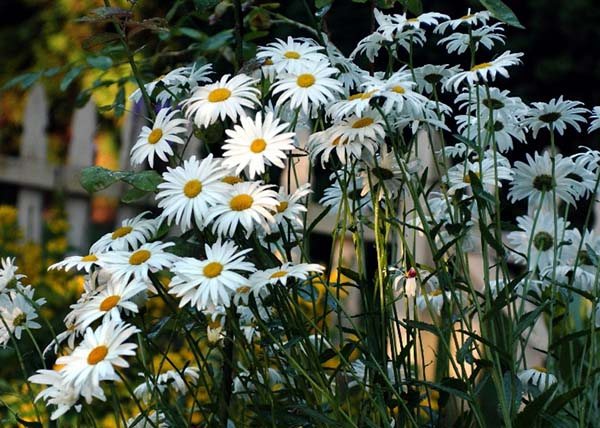

To date, scientists have identified about 25 plant species, 10 of which are actively grown in personal plots. The overwhelming majority of varieties are perennial, but you can also find an annual nivyanik.
The plant is distinguished by high (sometimes up to 1.3 meters) erect stems, simple or weakly branched. The foliage is collected mainly in a basal rosette, has a dense structure and a ribbed shape.
The flowers of the daisy are mainly white, for which the plant received its Greek name "white flower". However, there are pinkish and even yellow varieties. In addition, leucanthemum (nivyanik) can amaze flower growers with a variety of inflorescence shapes. The most common are large flowers of regular, round shape with simple, reed petals (one flower can have from 12 to 40). Recently, however, terry varieties have begun to gain popularity. In addition, you can find a daisy with inflorescences, in which 2-3 baskets are collected on one stem at once.
The main difference between the daisy and other species is its large flowers, a tall, straight and dense stem. These indicators are preserved regardless of the variety.
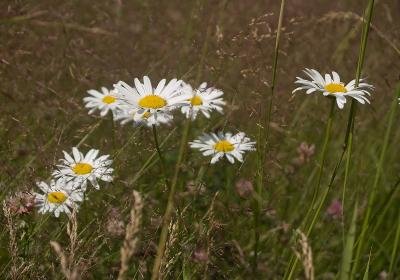

The closest relative of the daisy is garden chamomile. In comparison with which the nivyanik can be called a more noble and elite culture. However, you can often hear such a name as - priest. True, in this case, we are talking more about a wild-growing variety, which is also called an ordinary cornflower. Of course, there is a lot in common between the two plants, especially in appearance. But, in the usual understanding of the gardener, the nivyanik is, nevertheless, a refined, home plant, characterized by high varietal qualities, for the maintenance of which it is necessary to create certain conditions. But the poplar is a weedy type of chamomile. Its stems are softer, drooping up to 30 cm in height, small flowers. But the popovnik, like the pharmacy chamomile, is famous for its healing properties, while the noble Nivyanika has a much lower healing effect.
Florist tips
Small chamomile
The masters of their craft have a couple of tricks that help to grow magnificent terry daisies on the site:
- If the soil is sour, then do not despair. Before planting, it is enough to carry out alkalization, adding 300 g of lime, dolomite flour per 1 m².
- Immediately before planting, fertilizer for flowers is poured into the hole, which can be purchased in specialized stores.
- At the beginning of flowering, for the most lush buds, the plant is fed with a solution of potassium sulfate, superphosphate, 20 g per 10 liters.
- To prolong the life of cut terry chamomiles for sale, experienced gardeners feed them with baking soda (3/4 teaspoon is diluted in a liter of water). This will help get rid of bacteria and maintain a presentable appearance.
Attention! Do not overdo it with baking soda - it will destroy the plant.
- For abundant germination, soil is mulched with dry grass and sawdust.
- In one place, the daisy grows no more than 7-8 years. Overgrowth harms the plant's immunity and flower quality. Therefore, every 2-3 years it is necessary to rejuvenate the terry chamomile by dividing the bushes.
Terry daisies are flowers that look fresh in bouquets, retaining their original appearance and pleasant aroma for a long time. Using the information from this article, even a novice gardener can get many beautiful and lush buds of this plant on his site.

